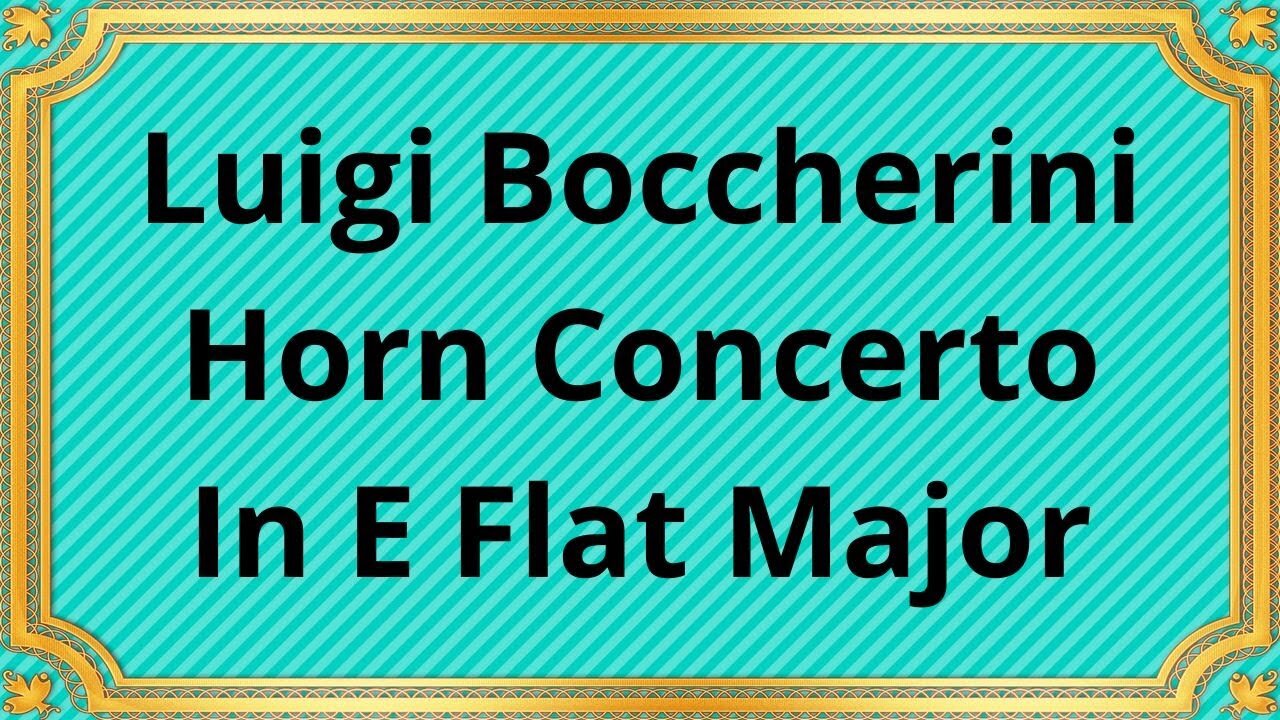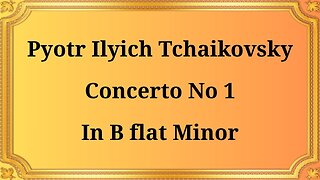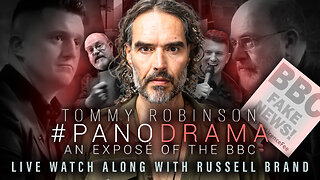Premium Only Content

Luigi Boccherini Horn Concerto In E Flat Major
#LuigiBoccherini #HornConcerto #EFlatMajor #ClassicalMusic #MusicalComposition #MusicAppreciation #MusicEnthusiasts #MusicScholars #MusicLovers #MusicEducation #OrchestralMusic #HornSolo #BaroqueMusic #MusicHistory #MusicPerformance
THE ITALIAN CHAMBER ORCHESTRA * NEWELL JENKINS, Conductor
Music has the remarkable ability to transport us to different eras, evoke emotions, and captivate our hearts. One such masterpiece that showcases the brilliance of classical music is Luigi Boccherini's Horn Concerto in E-Flat Major.
Luigi Boccherini, an Italian composer and cellist of the Classical period, crafted his Horn Concerto in E-Flat Major around the year 1782. Boccherini's works were celebrated for their melodic richness and impeccable craftsmanship, and this concerto is no exception. It was composed during the height of the Classical era, a time when composers like Mozart and Haydn were revolutionizing the world of music.
The Horn Concerto in E-Flat Major is a three-movement piece, adhering to the typical concerto structure of the time. The first movement, marked Allegro moderato, introduces the main themes and establishes the musical dialogue between the solo horn and the accompanying orchestra. The second movement, marked Adagio non troppo, provides a serene and introspective contrast to the lively first movement. Finally, the third movement, marked Rondo, brings the concerto to a vibrant and triumphant conclusion.
The concerto features the horn as the solo instrument, accompanied by a chamber orchestra. The orchestra typically consists of strings, including violins, violas, cellos, and double basses, along with woodwinds, such as flutes, oboes, and bassoons, and occasionally, horns and trumpets.
Boccherini's Horn Concerto showcases his gift for crafting beautiful and memorable melodies. The solo horn takes center stage, weaving intricate melodies that soar above the orchestra, creating a captivating musical dialogue.
The solo horn part in Boccherini's concerto presents various technical challenges, demanding virtuosity and control from the performer. The horn player must navigate through rapid scales, leaps, and trills, displaying both technical prowess and musicality.
Boccherini's score is rich in dynamic markings, enabling the performer to convey a range of emotions. From soft and delicate passages to bold and triumphant sections, the concerto offers a dynamic journey of expression and musical storytelling.
Boccherini's Horn Concerto embodies the elegance and refinement of the Classical era. It reflects the stylistic characteristics of the time, including balanced phrases, clear formal structures, and a focus on clarity and simplicity.
Conclusion:
Luigi Boccherini's Horn Concerto in E-Flat Major stands as a testament to his musical genius and the brilliance of the Classical period. Through its melodic richness, technical challenges, expressive dynamics, and adherence to the classical style, this concerto continues to captivate audiences and showcase the beauty of the horn as a solo instrument. Its enduring popularity cements its place as a harmonious masterpiece within the classical music canon.
You have the opportunity to support the channel:
https://destream.net/live/RadSiarAl/donate
https://www.buymeacoffee.com/6355radsiaral
-
 31:06
31:06
Classical music_Music Inspiration
1 month agoPyotr Ilyich Tchaikovsky Piano Concerto No. 1 in B-flat minor
581 -

The Quartering
3 hours agoToday's Breaking News! Greta FAKES Drone Attack, Animal Cruelty Spike & Cracker Barrel
78.4K12 -
 1:15:17
1:15:17
Awaken With JP
3 hours agoKaren Strikes Again, There is No Crime, Communism Succeeds! - LIES Ep 107
14.5K15 -
 LIVE
LIVE
Stephen Gardner
52 minutes ago🔥Tucker HUMILIATES Mark Cuban + Democrat Mayors ABANDON Party!
558 watching -
 11:37
11:37
Robbi On The Record
12 days agoThe Devil is in the Branding..
21.8K17 -
 LIVE
LIVE
The HotSeat
1 hour ago👉 STOP Blaming Each Other — Look at the Media!
553 watching -
![[Ep 744] ICE Storm Hits Chicago | Another Innocent Woman Slain in Auburn, AL | Islam Invasion](https://1a-1791.com/video/fww1/9b/s8/1/Y/a/w/g/Yawgz.0kob.1-small-Ep-744-ICE-Storm-Hits-Chica.jpg) LIVE
LIVE
The Nunn Report - w/ Dan Nunn
1 hour ago[Ep 744] ICE Storm Hits Chicago | Another Innocent Woman Slain in Auburn, AL | Islam Invasion
162 watching -
 1:39:20
1:39:20
Russell Brand
5 hours agoMedia Lies & Setups? Tommy Robinson’s Panodrama Watch Along - SF630
100K16 -
 1:56:56
1:56:56
MattMorseTV
4 hours ago $3.99 earned🔴Trump's MASSIVE Press Briefing UPDATE.🔴
19.9K31 -
 1:35:04
1:35:04
Right Side Broadcasting Network
3 hours agoLIVE: Make America Healthy Again Commission Meeting - 9/9/25
26.5K4